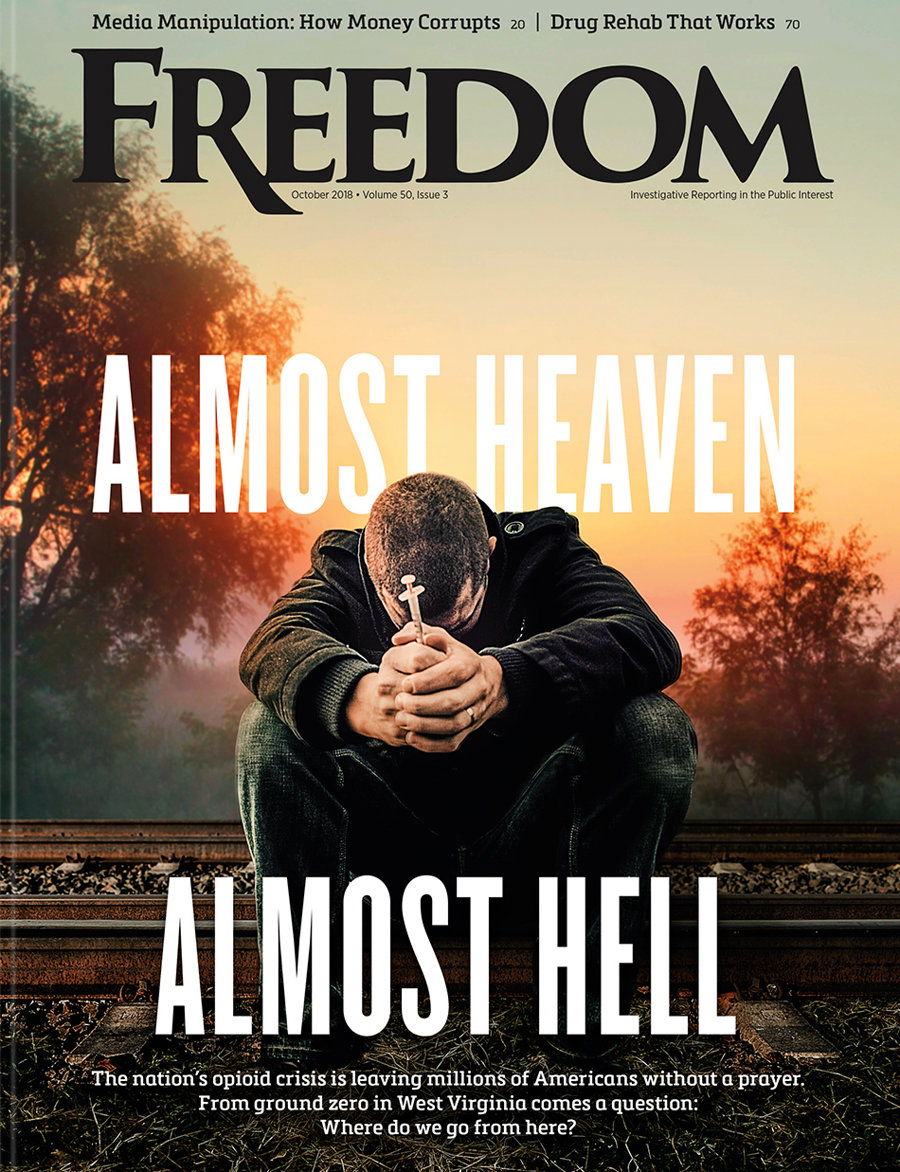“The single most destructive element present in our current culture is drugs.” —L. Ron Hubbard
“Doctors were pretty lenient then,” she said. “The person learns in time how to work the doctor. Complain more and maybe get more pills.”
When the prescriptions ran out, Stacy turned to vodka—a quart a day. Then heroin. Then fentanyl. During one 16-month period, Stacy overdosed 20 times. She was never a mother to her young daughter, Brittany—once in a drug-induced stupor, she even dropped a lighted cigarette in the child’s hair. Finally, after 30 years of addiction, including numerous ambulance rides to the ER and countless brushes with death, she got the help she needed.
Brittany says her mom was one of the lucky ones to survive the nation’s opioid epidemic. Now a US Representative from Colorado, Brittany Pettersen introduced a provision to bolster the Building Communities of Recovery program—part of a larger piece of bipartisan legislation passed by the House in 2023 to support those addicted to opioids.
It’s the most significant one-year drop in substance abuse deaths on record.
Brittany’s efforts and Congress’ help are part of a shaft of light in the unremitting darkness that has been America’s drug crisis as the Centers for Disease Control and Prevention (CDC) estimate of US drug overdose deaths indicates they are now lessening.
The CDC’s numbers show that drug overdose deaths began, in mid-2023, what may become a free fall. At 86,882 estimated overdose deaths over the 12 months between October 2023 and September 2024, substance abuse fatalities dropped by 27,000, or 24 percent.

Taken on a state-by-state basis, the decreases in death rates are even more dramatic: Ohio is down by 32 percent, Delaware by 33 percent, Virginia by 35 percent and North Carolina by 50 percent.
It’s the most significant one-year drop in substance abuse deaths on record.
And the drop was almost entirely in the leading cause of deaths: synthetic opioids, in particular fentanyl, which accounted for 87,155 fatalities in 2023, or 78 percent of all American drug overdose deaths that year.
What changed? How did this come about? And what can we do to keep the numbers tumbling?
According to the nonprofit think tank Progressive Policy Institute, three sweeping developments occurred to contribute:
- Source reduction abroad and at home. Simply stated, it’s harder to get fentanyl. Cooperation between US and Mexican law enforcement, for example, made possible the December 2024 seizure of 1,100 kilograms of fentanyl—equivalent to 20 million doses valued at nearly $400 million. The sting was part of a broader crackdown, arresting over 5,300 individuals and seizing nearly 58 tons of drugs, resulting in the weakening of factions of one of the two large narcotics cartels responsible for most fentanyl trafficking. And a growing reluctance among American physicians to prescribe opioids has resulted in a decline in domestic prescriptions from 154 million in 2019 to 125 million in 2023.
- Treatment. Support from Congress through legislation like that championed by Representative Pettersen and others has made testing and emergency treatment more accessible than ever. The use of naloxone, a medication that restores normal breathing to a person if their breathing has slowed or stopped because of an opioid overdose, for example, more than doubled from one million in 2020 to 2.13 million in 2023.
- Education. The ultimate short and long-range solution—drug education via schools, police, government, health providers and the private sector—has been making inroads. As a shining example, Foundation for a Drug-Free World, the Church of Scientology-sponsored nonprofit public benefit corporation, has distributed over 160 million Truth About Drugs booklets in 17 languages to individuals, schools, businesses, civic leaders and community groups across 188 countries.
Is it too much to hope for? Is it actually within the realm of reality that the scourge of substance abuse in America can finally be put under control?
It’s up to each of us, individually and together, for the sake of our species, to see to it that it is.






















